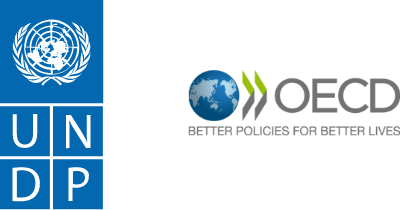
Framework
Goals
Identify issues preventing alignment and actions to achieve alignment.
Build consensus around an action plan that capitalises on and channels momentum.
Ensure holistic approach across the SDGs and the developing world.
The consultations have identified three interlinked set of issues that are preventing the alignment of finance to the SDGs.
Lack of transparency.
The proliferation of market-based standards without clear rules for disclosure or assessment of definitions and methodologies (e.g. Impact measurement metrics) could mislead investors and contribute to market distortions and SDG-washing. Over 185 sustainable financing initiatives could be identified, growing at rate of 8 per year (see annex 2 – stock-take of standards for private finance sustainability). Ensuring transparency and comparability of standards is a first step towards consolidation and eventually harmonization.
Lack of accountability.
The proliferation of market-based standards without clear rules for disclosure or assessment of definitions and methodologies (e.g. Impact measurement metrics) could mislead investors and contribute to market distortions and SDG-washing. Over 185 sustainable financing initiatives could be identified, growing at rate of 8 per year (see annex 2 – stock-take of standards for private finance sustainability). Ensuring transparency and comparability of standards is a first step towards consolidation and eventually harmonization.
Lack of coherence.
The proliferation of market-based standards without clear rules for disclosure or assessment of definitions and methodologies (e.g. Impact measurement metrics) could mislead investors and contribute to market distortions and SDG-washing. Over 185 sustainable financing initiatives could be identified, growing at rate of 8 per year (see annex 2 – stock-take of standards for private finance sustainability). Ensuring transparency and comparability of standards is a first step towards consolidation and eventually harmonization.

Addressing these issues will not necessarily unlock mobilization of capital to LDCs, SIDSs and developing countries.
For example, since the crisis, developing countries have experienced large capital outflows. Meanwhile, sustainable investment has increased. The lack of absorptive capacity in some recipient countries may be an issue. Measures aimed at increasing transparency and accountability could divert financial resources away from countries with limited resources and capacities to measure SDG alignment and impact, and we may end up reducing, rather than increasing flows to countries most in need of SDG financing. Taking externalities due to climate change into account may increase the risk or premium of investment in developing economies, adding to a potential additional real or perceived risk due to governance or corruption issues, and make emerging market sovereign issuers potentially vulnerable to negative rating actions . Furthermore, some relevant solutions for high-income economies might not fit others with shallower or less mature markets. To ensure both sustainability and equality, there is a need for a specific focus on capacity building, knowledge transfer and financial innovation to address developing countries additional constraints.
Recommendations.
The framework articulates around three mutually reinforcing sets of actions:
Policies to set-up fit-for-purpose governance mechanisms that creates appropriate incentives, promote accountability, and prevent market fragmentation.
Tools to better leverage existing resources for quantity and quality, and leave no one behind.
Standards to rise the bar on sustainability and strive for transparency, accountability and harmonization.

Roadmap.
What needs to be done to move this agenda forward?
Adoption of community action plans
and prioritization of actions.
This is an agenda for all, from consumers to global regulators. It will be important to promote the implementation of the framework’s recommendations and bring different communities behind the SDG alignment agenda – the whole agenda should not be embraced at once by each actor –, prioritization and appropriation of certain recommendations by different communities according to their comparative advantages will be key to success. Champions of SDG alignment, including the OECD and UNDP, should engage various public and private communities to translate recommendations into individual community plans of action and roadmaps.
Review of progress made in the different areas of action and accountability mechanism.
Progress in the implementation of the framework and SDG alignment at large should be monitored. This could be mainstreamed in the agendas of the various forums adopting plans of action (as part of their accountability mechanism), and/or be subject to an annual meeting on SDG alignment to be articulated with other relevant events. The objective would be to track progress on the implementation of recommendations identified in the framework, channel efforts and identify new issues and solutions for SDG alignment.
This framework is a living document.
It should be revised as the crisis unfolds and progress is made on the implementation of the different recommendations. The world is changing very fast, and technology will just increase the pace of change. The framework should remain flexible and adjust to specific country contexts. It must allow for real-time learning so innovation can surface and then spread, in a contextually appropriate way, across the world. The framework must carry on identifying new areas for intervention, and new recommendations on a continuous basis.
